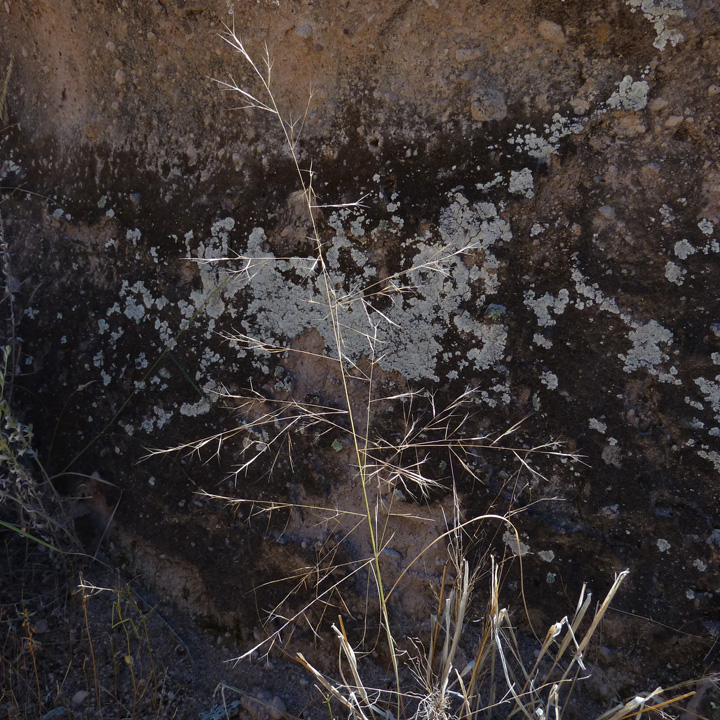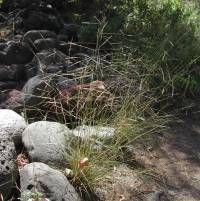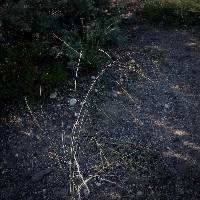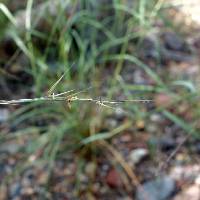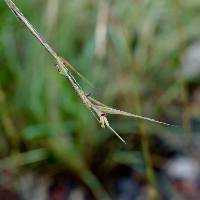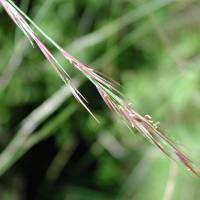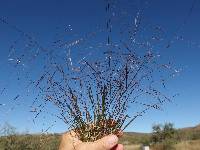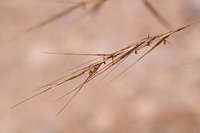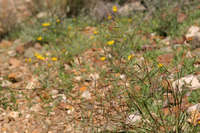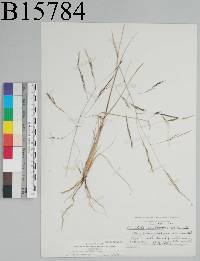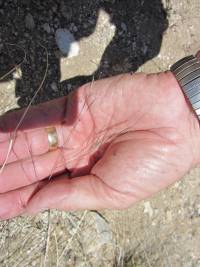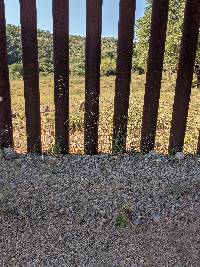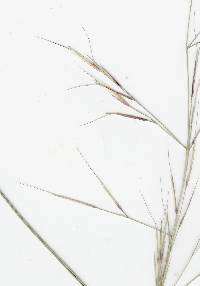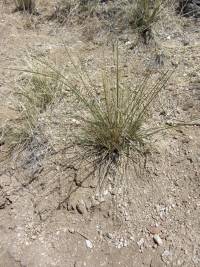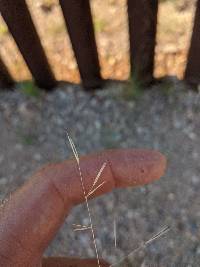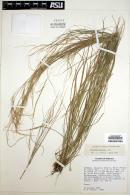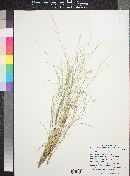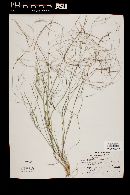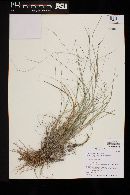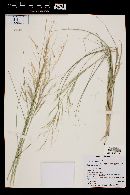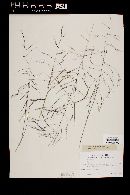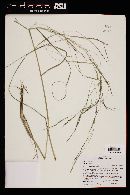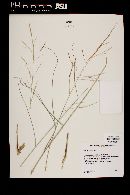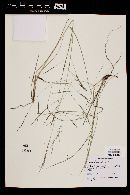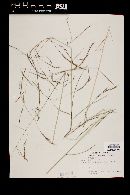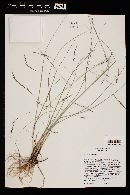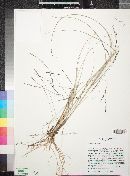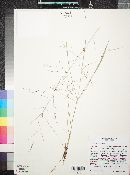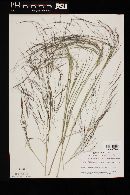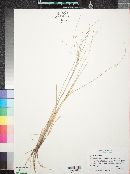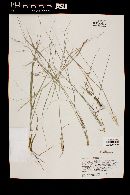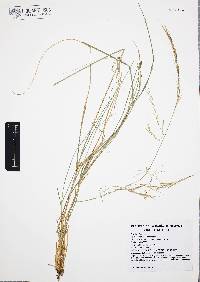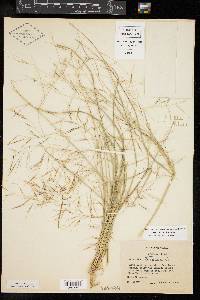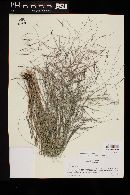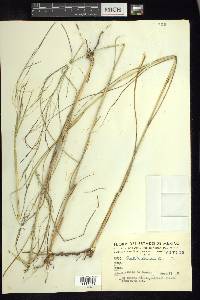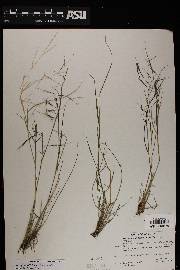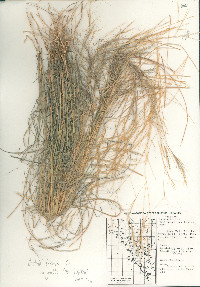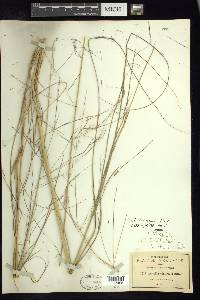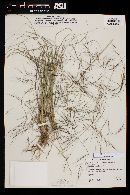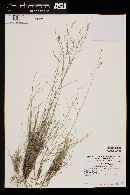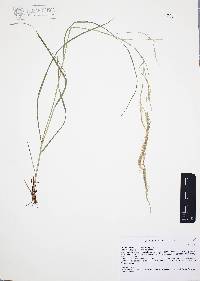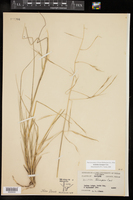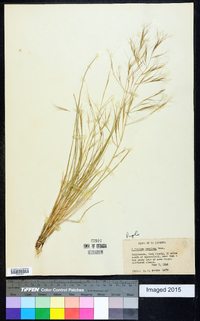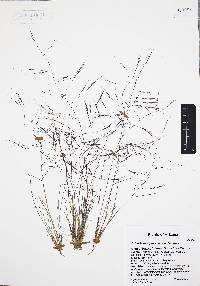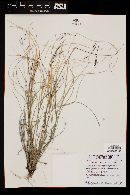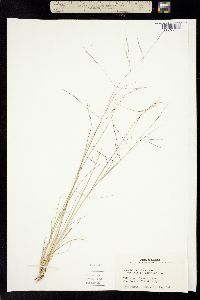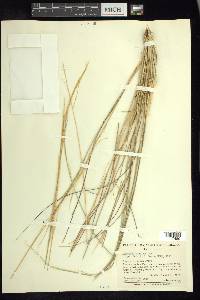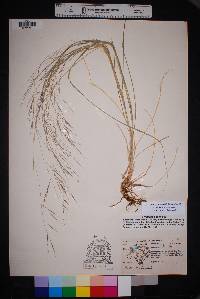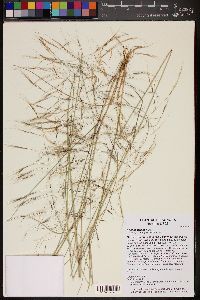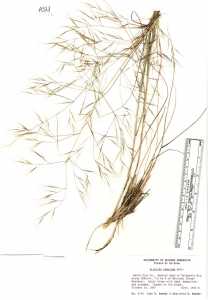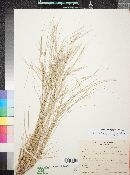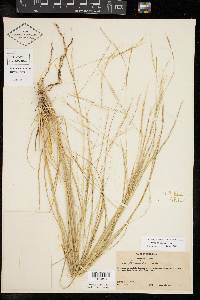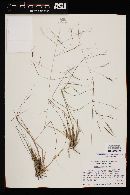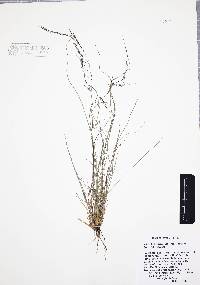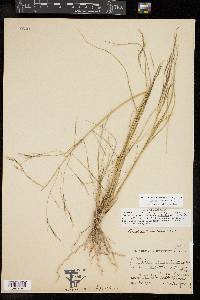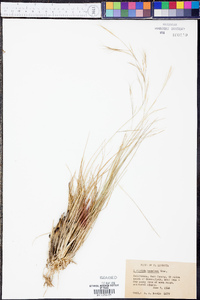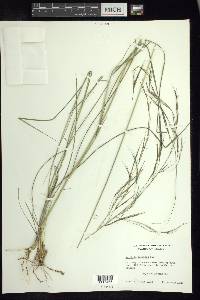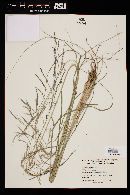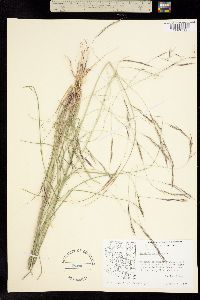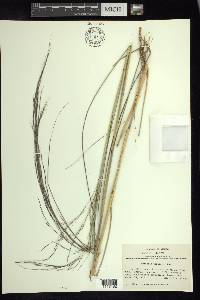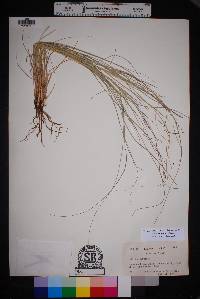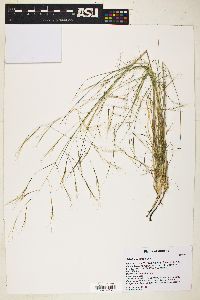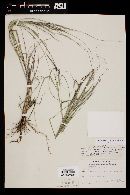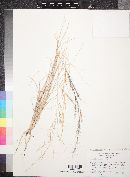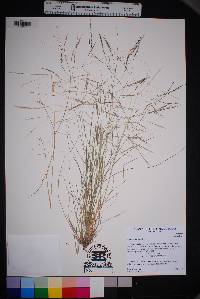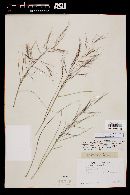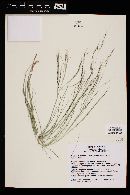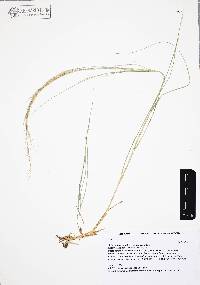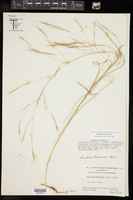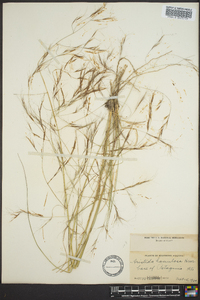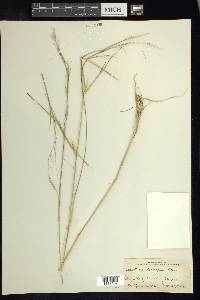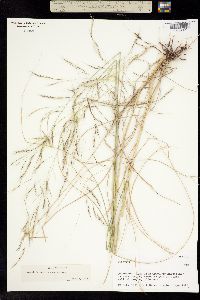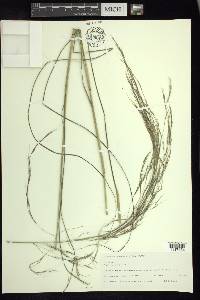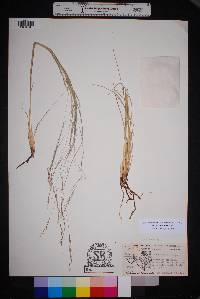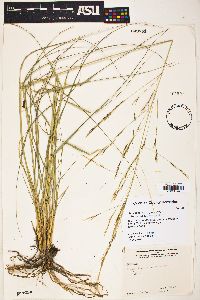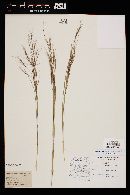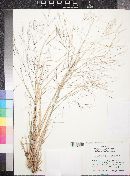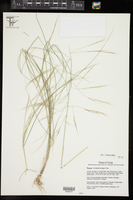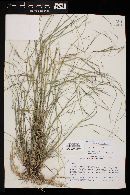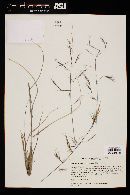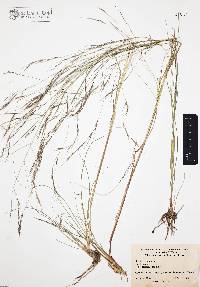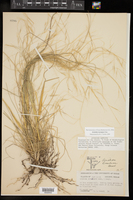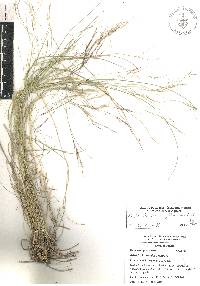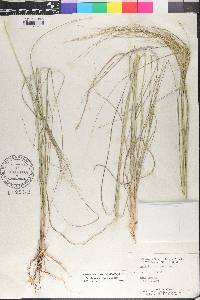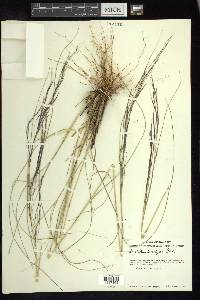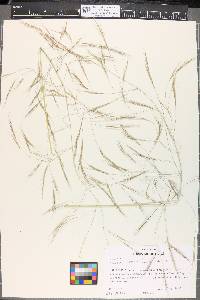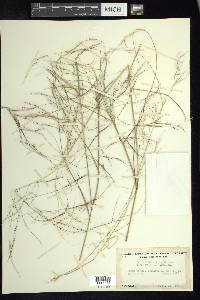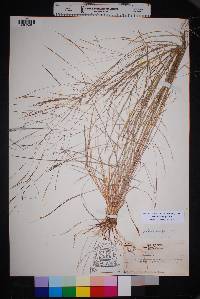Aristida ternipes
|
|
|
|
Family: Poaceae
Spider Grass, more...spidergrass, spider threeawn (es: zacate araña)
[Aristida schiedeana var. minor, moreMuhlenbergia scabra , Muhlenbergia tenuis (Kunth) Trin. & Rupr., Ortachne scabra (Kunth) E. Fourn., Ortachne tenuis (Kunth) E. Fourn., Streptachne cubensis A. Rich., Streptachne scabra Kunth, Streptachne tenuis Kunth] |
Plants perennial; cespitose. Culms 25-120 cm, wiry, erect to sprawling, unbranched. Leaves basal and cauline; sheaths usually longer than the internodes, glabrous; collars glabrous or strigillose; ligules less than 0.5 mm; blades 5-40 cm long, 1-2.5 mm wide, flat to folded, straight to lax at maturity, adaxial surfaces with scattered, 1.5-3 mm hairs near the ligule. Inflorescences paniculate, 15-40 cm long, (8)10-35(45) mm wide; rachis nodes glabrous or strigillose; primary branches 5-25 cm, remote, stiffly ascending to divaricate, with axillary pulvini, usually naked near the base; secondary branches and pedicels usually appressed. Spikelets usually congested. Glumes subequal, 9-15 mm, 1-veined, acuminate; calluses 1-1.2 mm; lemmas 9-15 mm long, smooth to tuberculate-scabrous, narrowing to slightly keeled, usually not twisted, 0.1-0.2 mm wide apices, junction with the awns not evident; awns unequal or almost equal, not disarticulating at maturity; central awns 8-25(30) mm, straight to arcuate at the base; lateral awns absent or to 0-23 mm; anthers 3, 1.2-2.4 mm. Caryopses 6-8 mm, light brownish. 2n = 22, 24. Dr. David Bogler, USDA NRCS PLANTS Database Annuals, Perennials, Terrestrial, not aquatic, Stems nodes swollen or brittle, Stems erect or ascending, Stems caespitose, tufted, or clustered, Stems terete, round in cross section, or polygonal, Stem internodes solid or spongy, Stems with inflorescence less than 1 m tall, Stems with inflorescence 1-2 m tall, Stems, culms, or scapes exceeding basal leaves, Leaves mostly basal, below middle of stem, Leaves mostly cauline, Leaves conspicuously 2-ranked, distichous, Leaves sheathing at base, Leaf sheath mostly open, or loose, Leaf sheath smooth, glabrous, Leaf sheath and blade differentiated, Leaf blades linear, Leaf blades very narrow or filiform, less than 2 mm wide, Leaf blades mostly flat, Leaf blade margins folded, involute, or conduplicate, Leaf blades mostly glabrous, Ligule present, Ligule a fringe of hairs, Inflores cence terminal, Inflorescence simple spikes, Inflorescence an open panicle, openly paniculate, branches spreading, Inflorescence solitary, with 1 spike, fascicle, glomerule, head, or cluster per stem or culm, Inflorescence with 2-10 branches, Flowers bisexual, Spikelets sessile or subsessile, Spikelets laterally compressed, Spikelet less than 3 mm wide, Spikelets with 1 fertile floret, Spikelets solitary at rachis nodes, Spikelets all alike and fertille, Spikelets bisexual, Spikelets disarticulating above the glumes, glumes persistent, Spikelets disarticulating beneath or between the florets, Rachilla or pedicel glabrous, Glumes present, empty bracts, Glumes 2 clearly present, Glumes distinctly unequal, Glumes shorter than adjacent lemma, Glumes awned, awn 1-5 mm or longer, Glumes 3 nerved, Lemma coriaceous, firmer or thicker in texture than the glumes, Lemma 3 nerved, Lemma glabrous, Lemma apex acute or acuminate, Lemma distinctly awned, more than 2-3 mm, Lemma with 1 awn, Lemma awn 1-2 cm long, Lemma awned from tip, Lemma awns straight or curved to base, Lemma margins inrolled, tightly covering palea and caryopsis, Lemma straight, Callus or base of lemma evidently hairy, Callus hairs shorter than lemma, Palea present, well developed, Palea membranous, hyaline, Palea shorter than lemma, Palea 2 nerved or 2 keeled, Stamens 3, Styles 2-fid, deeply 2-branched, Stigmas 2, Fruit - caryopsis, Caryopsis ellipsoid, longitudinally grooved, hilum long-linear.
FNA 2003, Gould 1980 Common Name: spidergrass Duration: Perennial Nativity: Native Lifeform: Graminoid General: Coarse, tufted perennial grass; culms erect to sprawling, 25-120 cm; flowers in first season; roots tough and wiry. Vegetative: Sheaths usually longer than the internodes, glabrous; collars glabrous or strigillose; ligules glabrous or with a sparse tuft of loose hairs; leaf blades firm, narrow, involute on drying, 5-40 cm long, 1-3 mm wide, upper surface glabrous or with short, ro Inflorescence: Openly branched panicles 15-40 cm long, 10-35 mm wide, branches spreading to approximately 90 degrees; branchlets and spikelets conspicuously appressed along the primary branches; spikelets with one floret each; glumes subequal (spikelets at first often showing only one glume, lower glume develops with age); lemma tapering to short, stout, scabrous, straight or only slightly twisted awn column; junction with the 3 awns not evident; awns unequal or almost equal, not disarticulating at maturity; to 25 mm long. Ecology: Found on rocky slopes and plateaus, as well as disturbed soils from 2,500-5,500 ft (762-1676 m); flowers summer. Distribution: c to s CA, west to TX; south through MEX to South America. Notes: Distinguished by being an erect, perennial three-awn bunchgrass with an open panicle, the branches possessing axillary pulvini (small appendages in the axils which force the branches open). The spikelets and pedicels are often appressed to the open panicle branches and the lateral awns are often slightly shorter than the central awn or even absent, the central awn being straight and not bent. Recognized as two varieties in the region: var. gentilis has an 3 well developed awns with the two lateral ones shorter than the central. Var. ternipes has one well-developed awn and the other two highly reduced to absent. Ethnobotany: Unknown Etymology: Aristida is from the Latin arista for awn, while purpurea is Latin for purple, ternipes is from Latin terni, three and the suffix -pes referring to the stalk. Synonyms: None Editor: SBuckley 2010, FSCoburn 2014, AHazelton 2015 |
|
|
|

